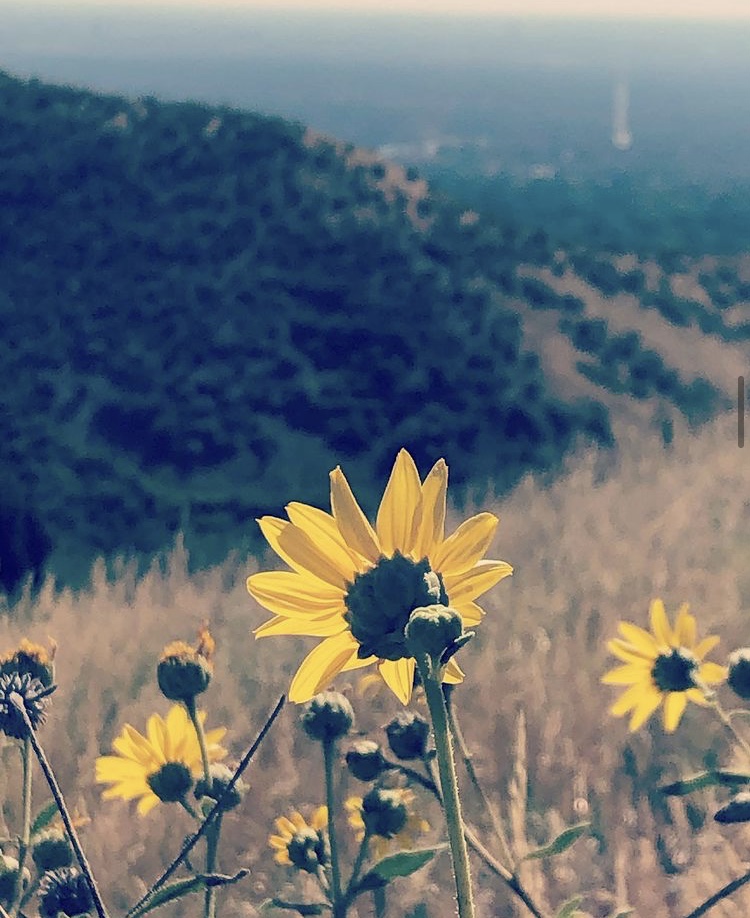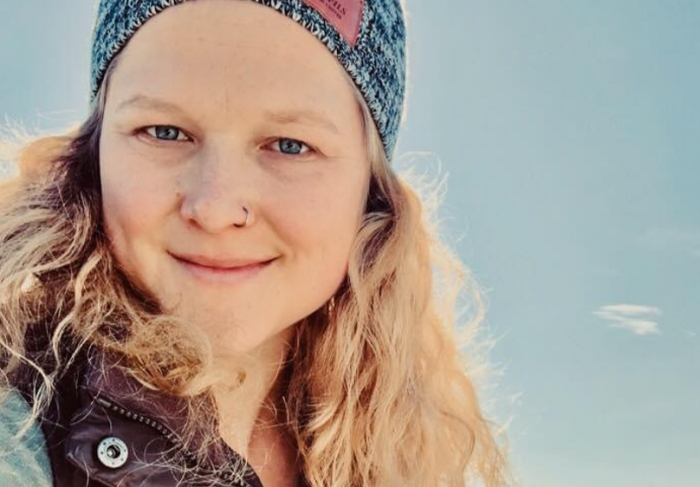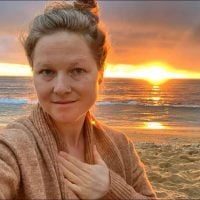The following article is an excerpt from Anna Palmer’s book, Coming Home: Healing From an Eating Disorder by Finding Beauty in Imperfection. May the words here grant you deeper permission to come home to the fullness of yourself, humanness, divinity, and all. Welcome home.
~
Chapter 2. Run, Little Girl, As Fast As You Can: On Trauma and the Development of an Eating Disorder
My heart was pounding. My head was buzzing with intoxication of air and breath pumping rapidly, feet striding faster than my mind could keep up, eyes lurching forward. I am running fast, and faster now. My skin is numb from the cold air around me. I am numb; I can’t feel my body anymore.
I see no other runners around me. I taste the dry sweat on my dust-speckled lips. I hear cheers from the fans around me and see my coach running up the field now. I am nearing the finish line.
Moments later, body hurling forward, like a scared deer or a bunny being chased by a predator, I cross the finish line. I breathe heavily, dazed and confused. I am floating, becoming a cloud of mist above my own body.
Five minutes and fifty-three seconds had passed since the race began. In a matter of minutes, I became the fastest middle school student to run the one-mile race for my school district.
This record held for at least 10 years thereafter. The following school day, my track coach left a congratulatory note and a Blow Pop on my school desk. I don’t think I ever ate it.
I felt nothing but emptiness. I was empty. I was running, literally and figuratively, on fumes. I was eating a few hundred calories a day. I never really counted calories back then. I only counted numbers of things, like how many Cheese-Its I allowed myself to eat at lunch, slowly dwindling the number down.
Counting was an obsessive-compulsive habit, marked by my starved anorexic brain. Before becoming “sick” with my first ever stint with an ED (anorexia at this point), I don’t remember ever liking running. In my anorexia days, I used it solely as a means to escape my body and dissociate from feeling anything other than numb.
When I decided to run track in seventh grade (the year I switched from a private Christian school to a public school), it wasn’t something that I did for joy. But it did give me a sense of achievement and a way to escape my direct experience. I was literally able to “run away” from the intense emotions I felt, even if just temporarily.
I always felt like someone lit a fire underneath me when I was running. My ED-driven mind was always urging me, “Faster, faster!” “Not hard enough!” It was this inner slave master and critic that had finally found its way to control me.
Prior to developing an ED, I was still fairly unscathed from the media and mass propaganda on women’s bodies, deeming the acceptable size and shape.
Body image was a semi brief detour in elementary school. I vaguely remember feeling some sort of “wrongness,” in my athletic build, in my “thicker” torso area, or what I perceived to be a “boxier” shape. I remember a picture I drew of my body in my diary. I drew my stomach area of log-looking images and scribbled the words “FAT” with arrows pointing to and around the area.
I remember comparing my body to my friends’ developing bodies. I was self-conscious that my body wasn’t “normally” developing. I always felt kind of more “manly” made in my athletic frame. I had strong arms from genetics and strong legs from soccer and playing sports.
My stomach, though, became my main area to endlessly hate, pick, and shred to absolute pieces of shame, hatred, and self-loathing. It was the area I could visibly pour and target all of my emotions of “too-muchness” into.
I would try to starve these feelings away. I tried to starve away the anger seeping into my skin and destroy my own flesh and body just to prove a point. But I didn’t know that with each compulsion of the ED thoughts and behaviors, I was further mutilating my own connection to my body and her wisdom. The ED became the dagger to use against myself whenever I needed relief from my emotions.
Before switching schools, I had attended a private Christian school. Previously, I was an average-sized, athletic 12-year-old female, raised in a Christian home with practically supportive, financially sound parents. In all respects, my childhood was seemingly idyllic. There was always more than enough food on the table and a warm bed to sleep in. And, yet, I emerged from adolescence a wounded version of my child self.
On the brink of seventh grade, the awkward midway point in an overall awkward time period, I decided to transfer to a large public school. My siblings were also transferring at this same time, so I followed suit.
I could feel the pull to venture from the growing toxicity of private school and my friend group. I wanted to be free of the suffocating Christian world I had grown up in, away from a toxic group of friends. We were the “popular, cool girls.” We were the ones others wanted to be friends with. I wasn’t the ringleader, but I was an active participant in subtle and more overt bullying tactics aimed toward our “less-than-cool” peers.
For this, I still carry some residual guilt. I always prided, and do pride myself and my character, on being a nice and kind human (as my parents taught me to be), and yet I still found myself intermixed in this group. I am not a victim, but I did begin to feel how utterly toxic this was for me. So, I separated myself. I switched schools in the middle of middle school, desperate to get out.
It was a challenging transitional year, as the other kids had already started to make friends. I thought that freedom, exploration, newfound friends, and opportunity awaited me on the other side.
I ached for a world outside the confined walls of church hood. But I didn’t know the change came hand in hand with fear, rejection, and isolation. My rebellious heart sought to be free. And, yet, I had to engulf a whole lot of pain and many years of emotional overwhelm and imprisonment to even know what freedom was again.
I was always a sensitive, but adaptable child. My mom told me that I was a very even keel baby. I could go anywhere with the family and had little resistance toward it all. I was just along for the ride.
I feel my sensitivity was perhaps always present, but I didn’t begin to notice it until I was maybe five years old. I wanted to be liked, paid attention to, to be in the spotlight, to be praised, and to be noticed. What child doesn’t?
As a young girl, I was the talkative one in class. My pre-school teacher even made a complaint to my mom about my disruptive nature. My mom wouldn’t take the bait. I loved being and talking with my friends. I loved playing dress-up, house, dolls, and any sort of imaginative play. I was a dreamer and a very imaginative young girl. I loved to play.
Upon being stripped from this comfort zone (even though it was my choice), my sensitive nature was overwhelmed and utterly terrified of how to make new friends. My shy, introverted nature came out center stage.
Being told you are “too sensitive” is another trauma that can happen before knowing what that means or what a gift that actually is. It’s another way of the “too fast, too soon” rendition of trauma. For me, this was my trauma. My peers told me at this highly chaotic feeling time, that I was “too shy.” I took this to heart to mean there was something wrong with me.
I felt everything so intensely at this time of swift change (new environment, new peers, etc.), that it was a “too fast, too soon” phenomenon for my nervous system and empathic nature to effectively withstand. I understood little of my own developing and inherent sensitivity at this point in time…”
~
Tune in next week for the next excerpt in this series.
~
Read part two of this series: How Eating Disorders are a way of Coping with Emotions & the Effects of Traumatic Events.
~













Read 0 comments and reply